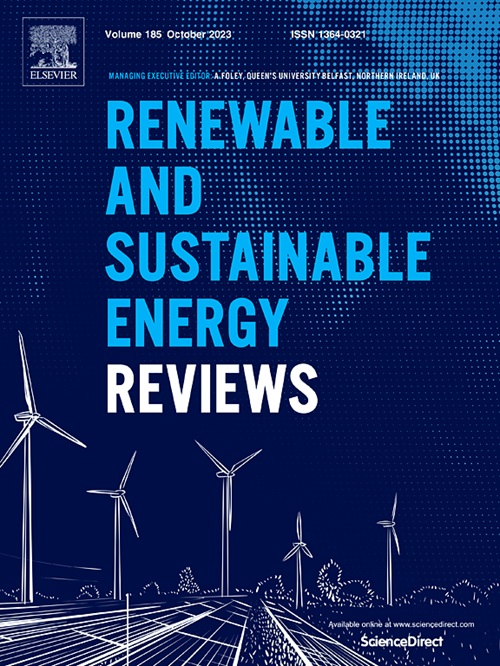开发一个框架,比较碳捕获和储存技术作为脱碳水泥生产的一种手段
IF 16.3
1区 工程技术
Q1 ENERGY & FUELS
引用次数: 0
摘要
鉴于节能措施和燃料转换对过程排放没有影响,对温室气体排放总量的影响有限,水泥生产很难减少。替代水泥和脱碳原料可以减少工艺排放;然而,完全脱碳需要碳捕获。然而,大多数脱碳路线图和研究对碳捕获进行了概括,却没有承认技术之间或实施技术的地区之间的差异。为了解决这一差距,我们开发了一个自下而上的水泥行业技术明确模型,以比较六种技术:化学吸收、物理吸附、膜吸收、钙环、部分氧燃料技术和全氧燃料技术。我们探讨了能源和温室气体影响、资本成本、非能源运营成本、能源成本和碳成本。加拿大的一项案例研究表明,考虑到碳价格信用额,碳捕集技术的减排成本为- 22至1加元/吨二氧化碳当量。我们的研究结果表明,能源可能占总成本的81%,这侵蚀了避免碳成本的好处,并增加了对能源价格的敏感性。然而,碳定价仍然强烈影响碳捕集技术的经济效益,到2030年最低碳价格为90加元/吨二氧化碳当量,确保碳捕集在加拿大各地保持经济效益。开发的框架可以在全球范围内使用,以帮助制定政策并为投资提供信息。本文章由计算机程序翻译,如有差异,请以英文原文为准。
The development of a framework to compare carbon capture and storage technologies as a means of decarbonizing cement production
Cement production is hard to abate given that energy-efficiency measures and fuel switching have no impact on process emissions and a limited impact on total greenhouse gas emissions. Alternative cements and decarbonized raw materials can reduce process emissions; however, complete decarbonization requires carbon capture. Yet, most decarbonization roadmaps and studies generalize carbon capture without acknowledging differences between the technologies or regions in which they are implemented. To address this gap, we developed a bottom-up technology-explicit model of the cement sector to compare six technologies: chemical absorption, physical adsorption, membrane absorption, calcium looping, partial oxyfuel technology, and full oxyfuel technology. We explored energy and greenhouse gas impacts, capital costs, non-energy operating costs, energy costs, and carbon costs. A case study for Canada demonstrated that carbon capture technologies can be implemented at emissions abatement costs of −22 to 1 CAD/t CO2e, accounting for carbon price credits. Our findings show that energy can account for up to 81 % of the total costs, eroding the benefit of avoided carbon costs and increasing sensitivity to energy prices. However, carbon pricing still strongly influences the economics of carbon capture technologies and a minimum carbon price of 90 CAD/t CO2e by 2030 ensures carbon capture remains economical across Canada. The developed framework can used globally to help develop policy formulation and inform investment.
求助全文
通过发布文献求助,成功后即可免费获取论文全文。
去求助
来源期刊

Renewable and Sustainable Energy Reviews
工程技术-能源与燃料
CiteScore
31.20
自引率
5.70%
发文量
1055
审稿时长
62 days
期刊介绍:
The mission of Renewable and Sustainable Energy Reviews is to disseminate the most compelling and pertinent critical insights in renewable and sustainable energy, fostering collaboration among the research community, private sector, and policy and decision makers. The journal aims to exchange challenges, solutions, innovative concepts, and technologies, contributing to sustainable development, the transition to a low-carbon future, and the attainment of emissions targets outlined by the United Nations Framework Convention on Climate Change.
Renewable and Sustainable Energy Reviews publishes a diverse range of content, including review papers, original research, case studies, and analyses of new technologies, all featuring a substantial review component such as critique, comparison, or analysis. Introducing a distinctive paper type, Expert Insights, the journal presents commissioned mini-reviews authored by field leaders, addressing topics of significant interest. Case studies undergo consideration only if they showcase the work's applicability to other regions or contribute valuable insights to the broader field of renewable and sustainable energy. Notably, a bibliographic or literature review lacking critical analysis is deemed unsuitable for publication.
 求助内容:
求助内容: 应助结果提醒方式:
应助结果提醒方式:


